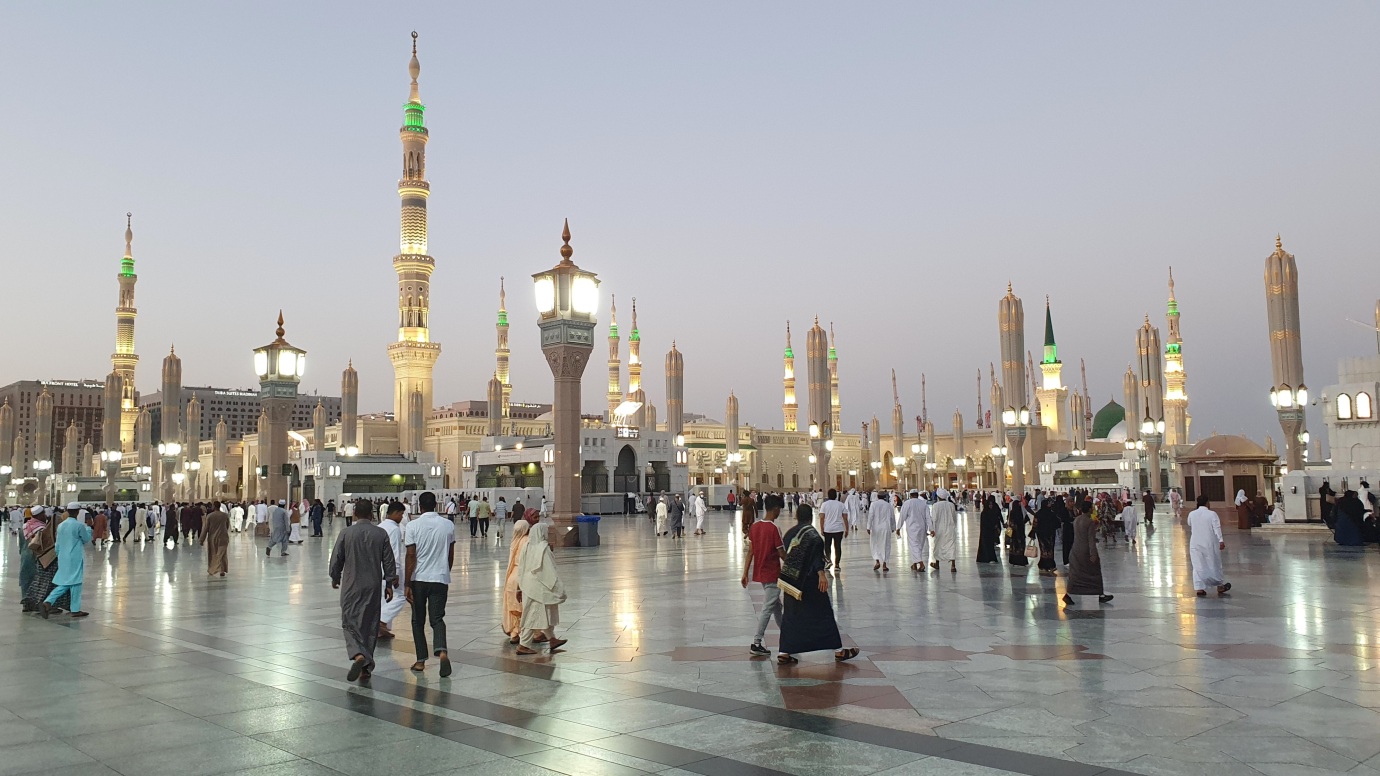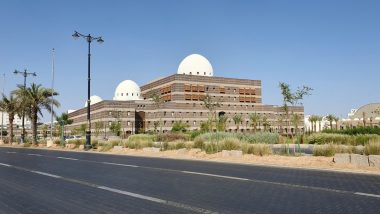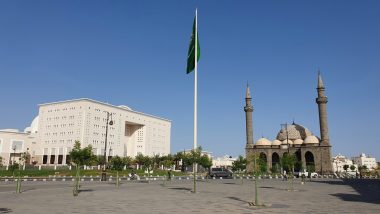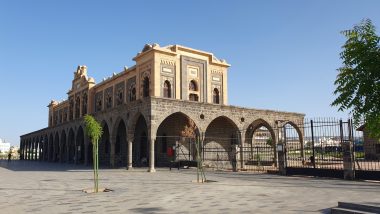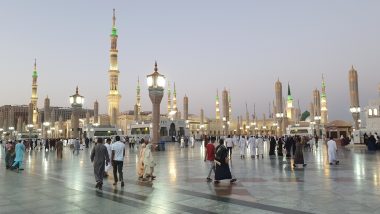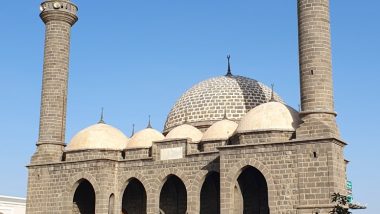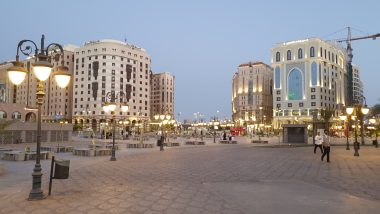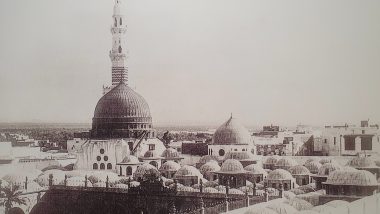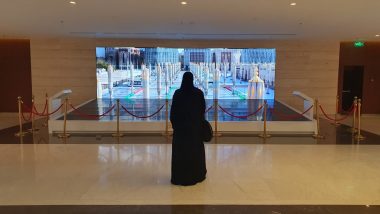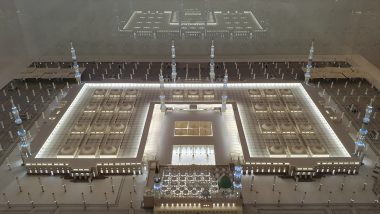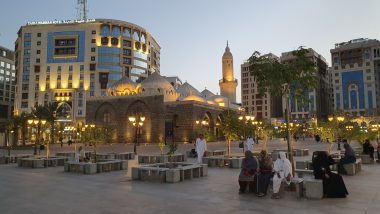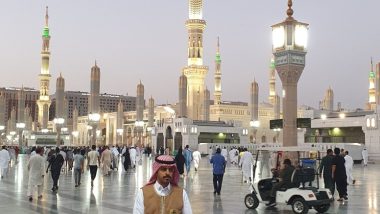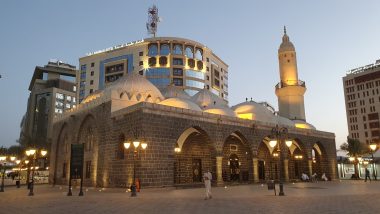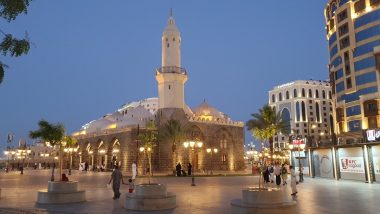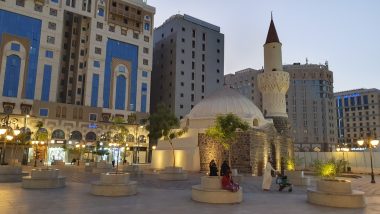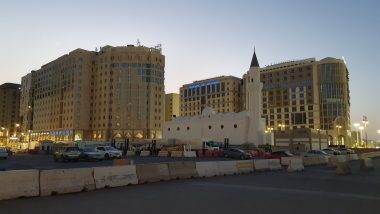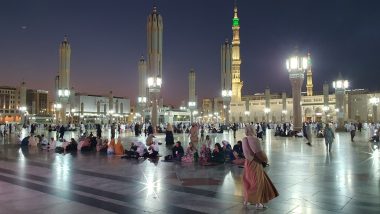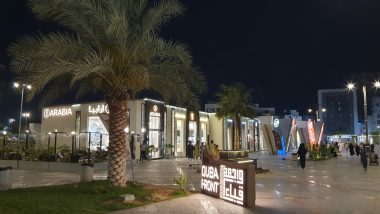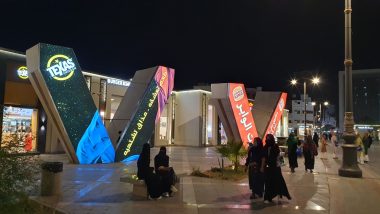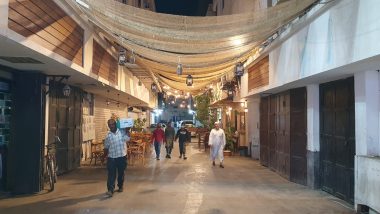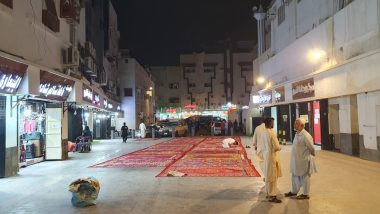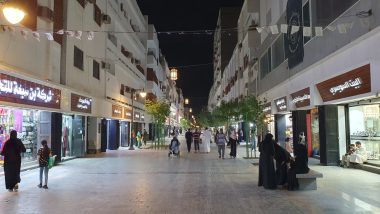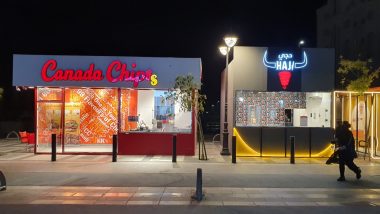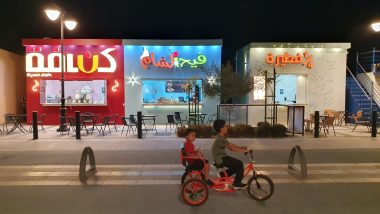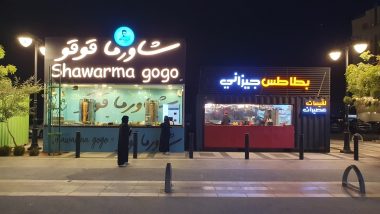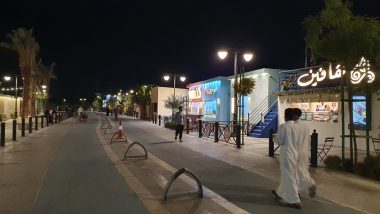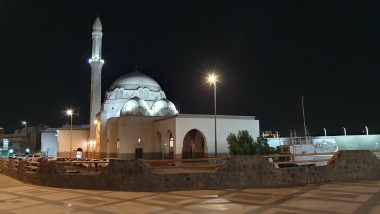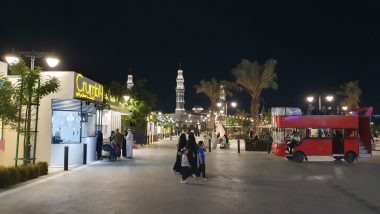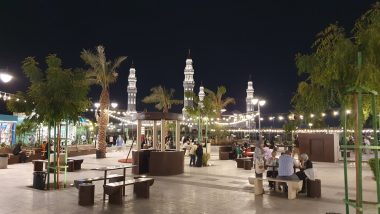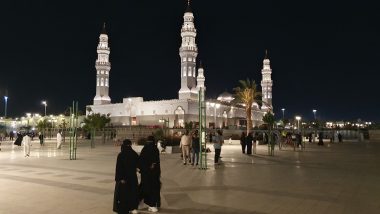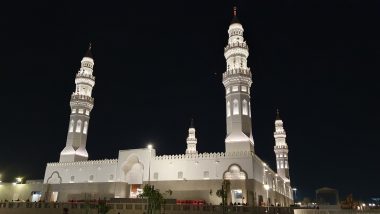We arrived at al-Madīnah, the second holiest city in Islam after Mecca. The city lies 625 meters above sea level on a fertile oasis. It is bounded east by an extensive lava field and on the other three sides by the Hejaz mountain range.
Unlike Mecca, Al-Madīnah is open to everyone, including non-Muslims. Non-Muslims used to be banned from Al-Haram, the city center, but this rule was relaxed in 2021. But entry into the Prophet’s Mosque is still forbidden for non-Muslims.
The Prophet’s Mosque holds deep significance for Muslims worldwide, one of only two mosques that can accommodate a million people. It is said to have been built by the Prophet himself in AD 622 and not only encompasses his final resting place (alongside the first two caliphs) beneath the iconic green dome built by the Ottomans, but it also covers where his house once stood, adjacent to the mosque when it was just a modest square mud-and-wood building.
The earliest history of Medina is obscure, though it is known that there were Jewish settlers there in pre-Christian times. On September 20, 622, the arrival of the Prophet Muhammad at al-Madīnah from Mecca introduced a new chapter into the history of the oasis. The recent rapid modernization of Al-Madīnah involved the complete dismantlement of the old city, so luxurious hotels and shops surround the Prophet’s Mosque, and just next to the gate, you can buy KFC or Krispy Kreme donuts.
We visited Hijaz Railway Station (no photos of the station and trains are allowed) and then took a taxi to the Prophet’s Mosque. After visiting the Museum of Islam, we walked four kilometers toward another famous mosque of Qubā. The first in Islamic history from which the Prophet has vouchsafed a view of Mecca, the Mosque of the Two Qiblahs, commemorating the change of the prayer direction from Jerusalem to Mecca.
Parking location – Al-Madīnah: 24.477108N 39.601174


